The AMD Ryzen 7 5700G, Ryzen 5 5600G, and Ryzen 3 5300G Review
by Dr. Ian Cutress on August 4, 2021 1:45 PM ESTMicrobenchmarks
Core-to-Core Latency
As the core count of modern CPUs is growing, we are reaching a time when the time to access each core from a different core is no longer a constant. Even before the advent of heterogeneous SoC designs, processors built on large rings or meshes can have different latencies to access the nearest core compared to the furthest core. This rings true, especially in multi-socket server environments.
But modern CPUs, even desktop and consumer CPUs, can have variable access latency to get to another core. For example, in the first-generation Threadripper CPUs, we had four chips on the package, each with 8 threads, and each with a different core-to-core latency depending on if it was on-die or off-die. This gets more complex with products like Lakefield, which has two different communication buses depending on which core is talking to which.
If you are a regular reader of AnandTech’s CPU reviews, you will recognize our Core-to-Core latency test. It’s a great way to show exactly how groups of cores are laid out on the silicon. This is a custom in-house test built by Andrei, and we know there are competing tests out there, but we feel ours is the most accurate to how quick an access between two cores can happen.
The Ryzen 7 5700G has the quickest thread-to-thread latency, however does offer a single slowest core-to-core latency. But compared to the 4000G series, having a single unified L3 cache reduces to core-to-core latency a good amount. The Ryzen 5 5300G has the slowest intracore latency, but the fastest average core-to-core.
Per-Core Power
One other angle to examine is how much power each core is drawing with respect to the rest of the chip. In this test, we run POV-Ray with a specific thread mask for a minute, and take a power reading 30 seconds into the test. We output the core power values from all cores, and compare them to the reported total package power.
The peak per-core power is shown as 15.2 W when one core is loaded on the Ryzen 7 5700G, and that comes down to ~8.8W when all cores are loaded. Interestingly this processor uses more power when six cores are loaded.
The Ryzen 5 5300G starts at 11.5 W for a single core, but then moves up to 12.3 W when three cores are loaded. It comes back down to 11.5 W when all four cores are loaded, but this ensures a consistent frequency (the 5300G has a 4.2 GHz Base and 4.4 GHz Turbo, explaining the small variation in loading).
Frequency Ramping
Both AMD and Intel over the past few years have introduced features to their processors that speed up the time from when a CPU moves from idle into a high-powered state. The effect of this means that users can get peak performance quicker, but the biggest knock-on effect for this is with battery life in mobile devices, especially if a system can turbo up quick and turbo down quick, ensuring that it stays in the lowest and most efficient power state for as long as possible.
Intel’s technology is called SpeedShift, although SpeedShift was not enabled until Skylake.
One of the issues though with this technology is that sometimes the adjustments in frequency can be so fast, the software cannot detect them. If the frequency is changing on the order of microseconds, but your software is only probing frequency in milliseconds (or seconds), then quick changes will be missed. Not only that, as an observer probing the frequency, you could be affecting the actual turbo performance. When the CPU is changing frequency, it essentially has to pause all compute while it aligns the frequency rate of the whole core.
We wrote an extensive review analysis piece on this, called ‘Reaching for Turbo: Aligning Perception with AMD’s Frequency Metrics’, due to an issue where users were not observing the peak turbo speeds for AMD’s processors.
We got around the issue by making the frequency probing the workload causing the turbo. The software is able to detect frequency adjustments on a microsecond scale, so we can see how well a system can get to those boost frequencies. Our Frequency Ramp tool has already been in use in a number of reviews.
In our test, the Ryzen 5 5600G jumps from 2700 to the turbo frequency in around a millisecond.


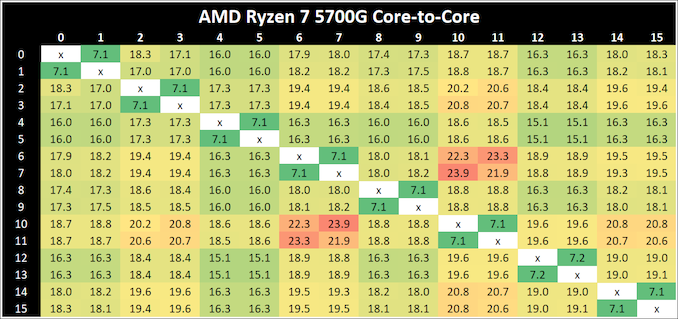
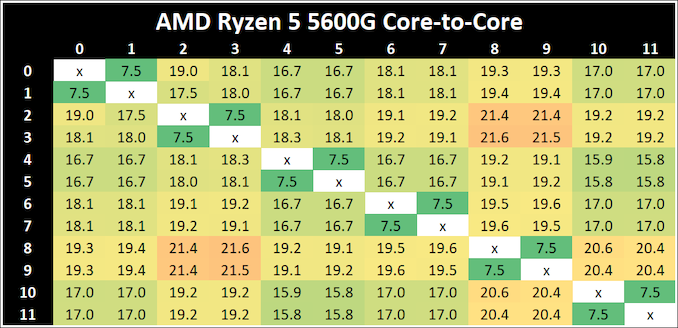
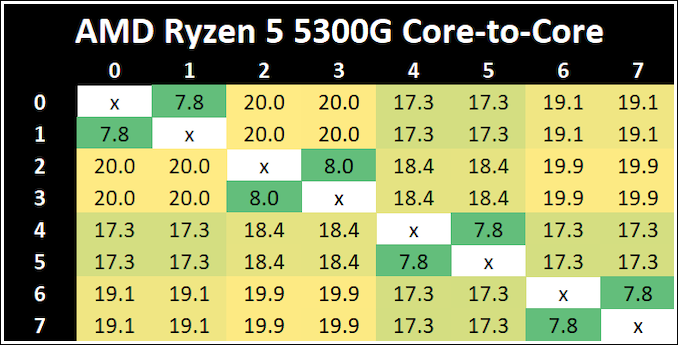
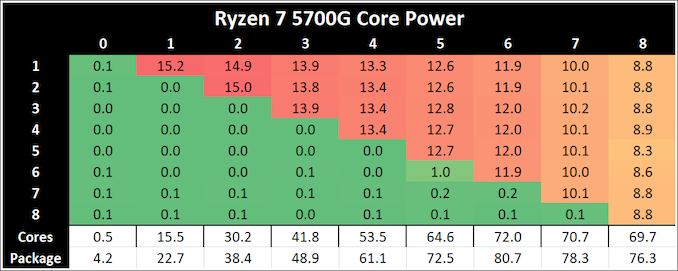

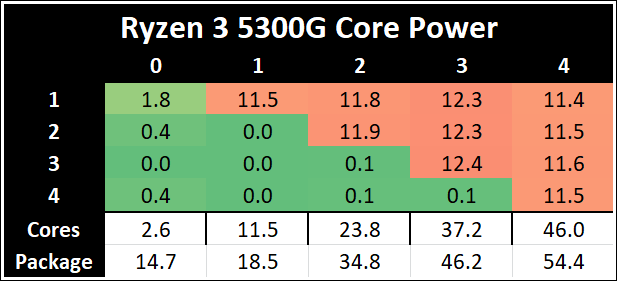
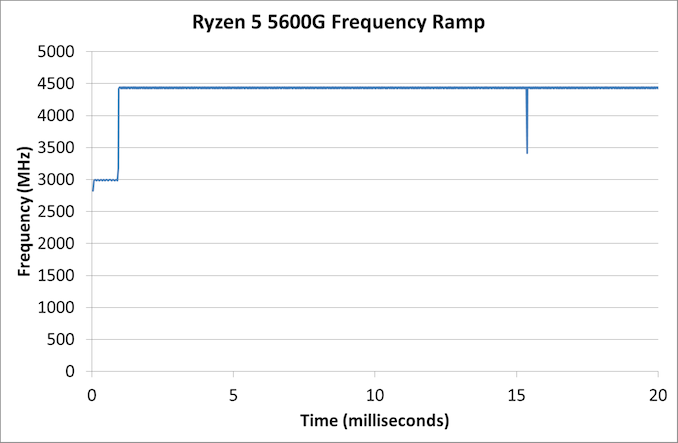








135 Comments
View All Comments
mode_13h - Thursday, August 5, 2021 - link
Thanks for the correction. That was a real head-scratcher!msroadkill612 - Thursday, August 5, 2021 - link
Under the table on p1"The top part is a Ryzen 7 5700G, featuring eight cores and sixteen threads, with a base frequency of 3.8 GHz and a turbo frequency of 4.6 GHz. The Vega 8 graphics runs at 2000 MHz, and we get 16 lanes of PCIe 3.0 for graphics, plus another four for storage."
Not so -AFAIK - all apus have 8 lanes for the graphics pcie slot.
anand made the same mistake on a previous apu review as i recall. its very misleading.
nanonan - Friday, August 6, 2021 - link
The 4000G series have 16 lanes and so do these, it was not misleading at all as far as I can tell.Fulljack - Friday, August 6, 2021 - link
nope, the connection to GPU were different according to the package. any APUs packaged on AM4 will have x16 PCIe 3.0 connection—always has been since Raven Ridge.for laptop, FP6 and previous package were limited to x8 PCIe 3.0 connection for the GPU.
pman6 - Thursday, August 5, 2021 - link
will have to wait for 6000G, since this has old ass graphics with no AV1 decoding support. Enjoy your choppy 4k/8k videonandnandnand - Thursday, August 5, 2021 - link
~2x graphics performance, AV1 decode, DDR5, PCIe 4.0, USB4, and possibly a Zen 3+ IPC increase.GreenReaper - Thursday, August 5, 2021 - link
Yeah... they're good CPUs, but not the one to get if you're buying something to use for the next decade.GeoffreyA - Thursday, August 5, 2021 - link
Possibly the best for AM4 folk that want an APU.GeoffreyA - Thursday, August 5, 2021 - link
Can't comment on 8K, but 4K runs smoothly even on an old 2200G.pman6 - Thursday, August 5, 2021 - link
not 4k60 AV1 it doesn't. Or it uses a lot of cpu resources